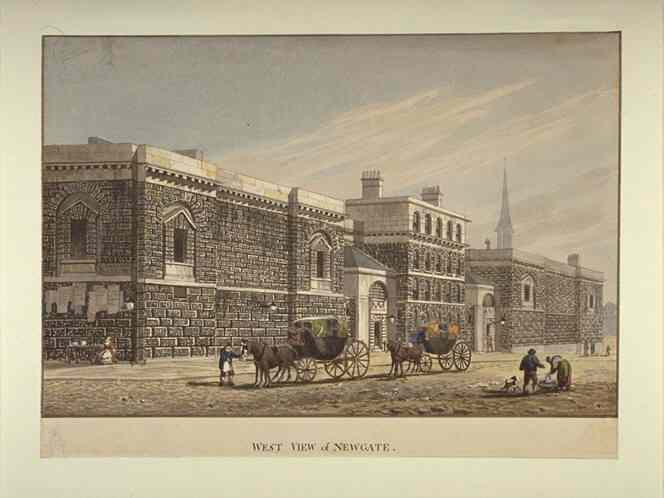

The West View of Newgate Prison
Newgate Prison
was a dismal, unhealthy place. Approximately thirty people died there every
year. Physicians often refused to enter the prison and people passing by held
their noses [1].
It is the oldest, most famous, and one of the most important prisons in eighteenth
century England. Though it was technically a local prison under the control
of the Lord Mayor and Aldermen of London, it held a special position because
it was not only the place of detention for all those awaiting trial at the neighboring
court, but also a sort of holding pen for those awaiting execution. It also
doubled as a debtors' prison.
Newgate was notorious
for its overcrowding, unhealthy environment (lack of air and water, and epidemics).
Prisons, Newgate included, did not supply their prisoners with bedding and clothing.
These things had to be purchased from the keepers. In addition to this cost,
prisoners were also expected to pay a fee upon admission. They also needed to
continue to pay money if they wanted any of the ordinary comforts of life. Then,
when released, they were expected to pay yet another fee before they were allowed
to leave.[2]
The Ordinaries of Newgate
often published accounts of the lives of those who passed through the prison.
They included such information as the crimes committed, previous convictions,
trial information, life leading up to the stay in Newgate, as well as a description
of the sorts of punishments that individual was to suffer. It is because of
these writings that Newgate Prison has become the most well-documented prison
of eighteenth-century England, allowing modern scholars to understand the system
of justice during the time.